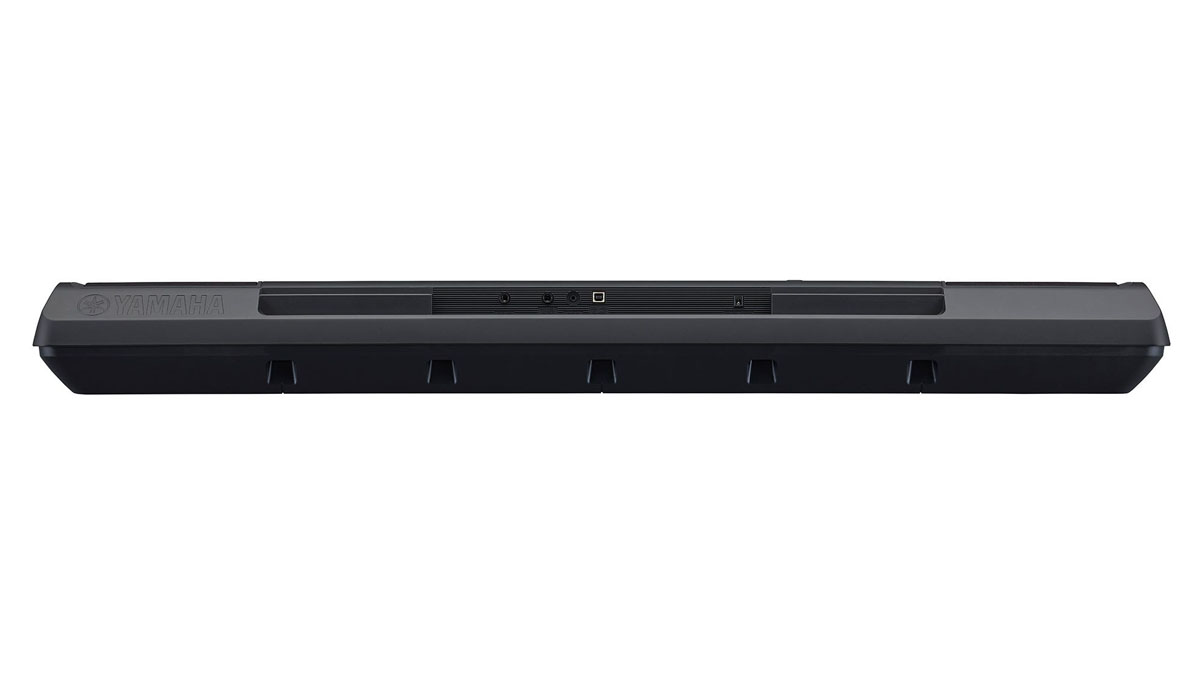When my daughter expressed an interest in learning the piano, we resisted the urge to buy her her own keyboard because, well, even older children lose interest in a new hobby sometimes. Instead, we passed on our 12-year-old electric piano keyboard from Yamaha that was gathering dust in my wife’s office. While my daughter did benefit from this, it did run into some issues with being out of tune, not being able to connect to devices, and generally being outdated tech. So, when the fine folks at Yamaha offered me a review unit, we decided to see if it was an improvement, and how much it helped. Enter Yamaha’s PSR-E373, and a musically challenged noob (myself) trying to evaluate this device with the help of a neophyte (my daughter).
First Things First
The first thing you need to know about the PSR-E373 is that you cannot buy it from Yamaha’s website at this time. You must order it through Amazon or another retailer. The second thing to know is that the keyboard does not come with a power adapter, and you must order it separately. Third, you can plug in this keyboard and play it without any need for tuning, programming, or any other finicky setup. Experienced piano keyboard players will be able to run straight from the gates, and learners won’t have to learn all the functions of the keyboard before they can start to learn. Finally, it doesn’t come with a stand, either. This was a challenge for us until we realized we could just use an old one, but you might want to consider ordering one if you don’t want your keyboard to live on the dining room table.
Good For Learning?
Our primary interest in using the new keyboard was to help my daughter learn how to play. With the Covid-19 pandemic raging, we couldn’t exactly send her to a tutor or music teacher, so it was important for us that she be able to teach herself using the keyboard without too much guidance from more experienced musicians or too much scouring the internet. Each of these notes comes from our firsthand experience with no outside help, so if you are using a tutor, or are familiar with Yamaha’s various devices, you will have a different experience on many of these features.
The first thing we found was that there a lot of optional features on the keyboard’s interface, and that it’s difficult to navigate the hundreds of independent options. Here are the things we learned while trying to figure that all out:
- There are hundreds of “voices” available, which mimic the sounds of unique instruments, including standards like piano, organ, etc. and many unique options like a voice that is entirely composed of choir-style voices singing the word “wow”.
- The drums (voices 242-263) are extremely easy to use, because the keys have icons above them showing which drum type is expressed by the key. For example, a tambourine has a tambourine and a snare has an image of a snare.
- The manual refers to fictional page numbers for a list of the 622 voices. According to the manual, page 72 has a full list of voices, but there is no page 72 in the manual, and there’s no list in the songbook.
- The keyboard has a delay built in to the power button when turning it off. This means that while you just press the power button to turn it on, while turning it off, you must stand there and watch to make sure they keyboard is actually turned off.
- The Split feature allows you to play two separate instruments at once, one on the left side, one on the right. You can choose any of the 622 voices for the split, and can change where the keyboard “splits,” customizing the range of notes available to each side for your needs.
- If you change a ton of settings and have no idea how to get back to a “basic” grand piano, just press the “Portable Grand” button, which resets all of the many options to the default array. This is also great for giving yourself permission to “play” with the settings if you’re learning, say, how metronomes work, or want to try different instrument voices.

Image: Yamaha
The Digital Songbook
Yamaha has a digital songbook which you have to get from their website. Unfortunately, there’s no direct link in the manual or shipping materials, but you can find it here. Since it is digital, it is best viewed on an iPad or similarly large tablet. My daughter printed out some pages for constant use, like the instructions for reading music, sitting properly, and more. This way, she doesn’t have to scroll through the entire songbook for the reference material while she’s working on a song. Alternatively, one can just use multiple devices or windows to view the songbook in multiple instances.
Key features of the songbook include:
- Posture and hand placement
- Reading music
- Learn to play
- Musical glossary
- 19 individual song lessons (like “Für Elise,” including pictures and advice)
- A total of 102 songs
- Special appendices for features like Touch Tutor, Chord Study, and Chord Progression
Looking to Upgrade?
If you’re trying to decide whether to upgrade from the PSR-EW310, these features are relevant:
- Eleven Super Articulation Lite Voices (SALite) in conjunction with the articulation button provide greater control over and realism to Voices, including String Scratches and Guitar Slide notes.
- Upgraded DSP effects, which let the player add Real Distortion to a guitar voice, or Real Reverb to a piano, to shape, enhance and impart just the right amount of color to the sound.
- Upgraded Wave Samples from the PSR-S670.
To be honest, I have no idea what any of that means, but that’s the way Yamaha described those features.

TL;DR
If you’re new to electronic keyboards and you’ve never tickled the keys before, this honestly isn’t a bad place to start. The bundle on Amazon runs around $250 (when it’s not sold out because it’s so popular) and has everything you need to get started. Don’t get too hung up on learning all the features and capabilities at once. We are nowhere near ready to make use of MIDI ports, for example, and all those extra features don’t get in the way too much.
If you’re an experienced keyboard/piano player, all the bells and whistles are there for you. Whether you want more range of expression through the hundreds of voices, or you want more features like MIDI connectivity, programmable settings, and automatic accompaniment to your playing, the Yamaha PSR-E373 has everything you need.
The Link LonkJanuary 14, 2021 at 08:00PM
https://ift.tt/3bEFHEJ
A Neophyte’s Review of Yamaha’s PSR-E373 Piano Keyboard - GeekDad
https://ift.tt/2ZqQevw
Yamaha


No comments:
Post a Comment